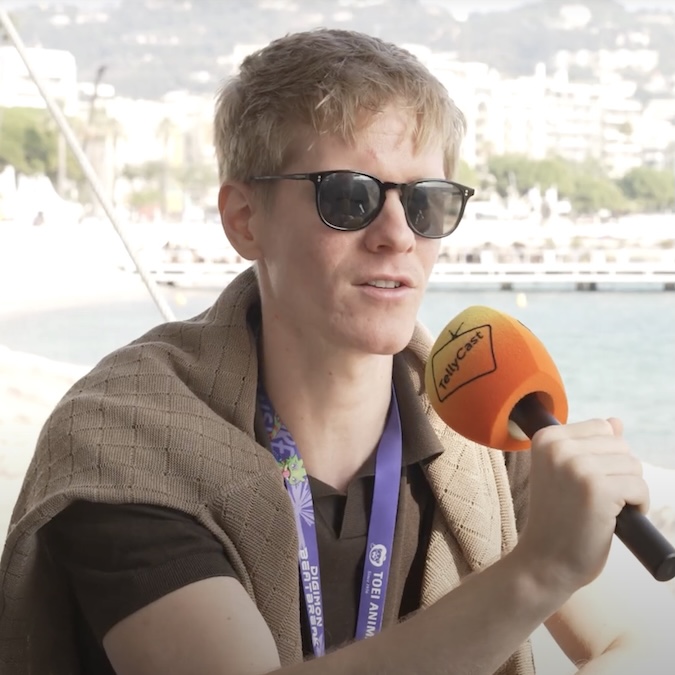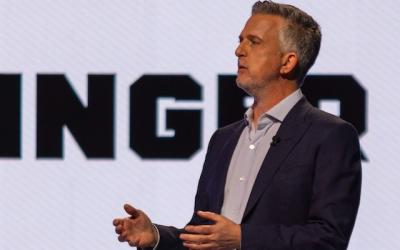There was something symbolic about seeing Victor Bengtsson of Sidemen Entertainment wandering along the Croisette during MIPCOM, joking that the air in Cannes “smells like champagne and cigars.” The Swedish managing director of Europe’s biggest creator collective’s production company looked at once bemused and amused by the festival’s rituals — the yacht parties, the power breakfasts, the endless talk of “formats.”
For years, legacy media dismissed YouTubers as a noisy sideshow. Now the creator economy has crashed the gates of international TV. Bengtsson’s presence in Cannes, fresh from Sidemen’s global Netflix hit Inside, marked the moment that digital-first entertainment fully entered the mainstream.
“The boys have been making content for 10 or 15 years,” he told me, “but when we built the company four or five years ago, the idea was: what’s a ‘Big Brother’ for Gen Z?” That question became Inside — a high-stakes unscripted competition born on YouTube, now a worldwide franchise. The UK series hit No 2 on Netflix; the US version went straight to No 1. Viewers in the Nordics and even Malta held watch parties for the finale. “We realised we were reaching people who didn’t even follow the Sidemen,” Bengtsson said. “That was new. We were making TV.”
What makes Sidemen’s approach different isn’t the format — it’s the attitude. Their production team of 50 staff (and around 40 regular freelancers) turns out 11 videos a week across multiple channels, operating with the agility of a startup and the intensity of a live newsroom. When they shift gears into long-form projects such as Inside or the sold-out Wembley Stadium Sidemen Charity Match, the whole operation piles in. “We call it trench season,” Bengtsson laughed. “Everyone just turns up, figures it out and goes for it.”
The set stories are legendary: a producer arriving on day one horrified by the chaos, only to declare five days later, “I’m having so much fun.” For Bengtsson, that word — fun — is the secret ingredient traditional TV has lost. “In the nineties, everyone was just making stuff,” he said. “Jackass, MTV — it was messy and brilliant. Then it all became glossy and overproduced. We want to bring the fun back. How much does a laugh really cost?”
It’s a philosophy that has shaken up the production world. At a time when streamers are cutting back and broadcasters fret about dwindling youth audiences, Sidemen Entertainment has become a model of creative efficiency and authenticity. Their brand thrives not on polish but on connection.
Yet Bengtsson insists the journey has been humbling. “Making TV is hard,” he admitted. “You think it’s just friends pressing record, but there’s real craft in structure and quality control. We’ve learned to respect that.” He now sees a surprising camaraderie between the traditional and the new. “Even here at Cannes, people are friendly. There’s competition, but also curiosity. The industry’s starting to see creators as part of the same ecosystem.”
The next step, he says, may be scripted content — “our generation’s Inbetweeners or Silicon Valley” — though he’s in no rush. “We want to keep building IP that feels true to us.” For now, the focus is on refining Sidemen’s workflow and nurturing the culture that keeps their team energized. “Every week, 75 percent of the job is getting the videos out. The other 25 percent is: let’s figure something new out.”
At November’s TellyCast Digital Content Forum in London, Bengtsson will join me on stage to dissect Inside — how it was developed, cast and produced on creator terms, and how the team re-engineered every step of the process. “We questioned everything,” he said. “We kept what worked and ditched what didn’t. And maybe we’ll even talk about price point.”
Back in Cannes, as the champagne continued to flow, Bengtsson summed up the Sidemen’s unlikely rise with typical understatement. “We’re just having fun,” he grinned. “And somehow that’s become serious business.”





